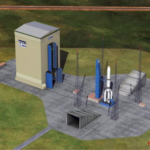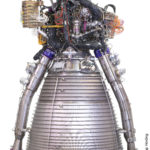The first structural element of the mobile gantry that will house and protect Ariane 6 before launch has been assembled.
The mobile gantry is a 90 m-high, nine-storey structure weighing 8200 tonnes. Riding on rails, it is retracted before launch.
Work platforms will enable engineers to access the vehicle levels to vertically position Ariane 6’s central core directly on the launch table, add two or four boosters depending on the launch configuration, and integrate the fairing that houses the payload. Read more…





